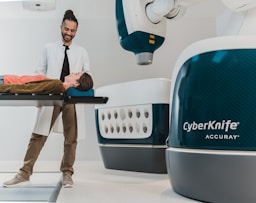Virtual Opioid Use Disorder Treatment: How Telemedicine and Suboxone Are Changing Recovery
Opioid use disorder (OUD) remains a pressing public health crisis in the United States and around the world. But as addiction treatment continues to evolve, one major breakthrough has proven to be a game-changer: virtual opioid use disorder treatment. Thanks to telemedicine, people battling OUD now have easier access to life-saving medications like Suboxone and Buprenorphine, with support services that also address co-occurring issues like depression.
If you or a loved one is struggling with opioid addiction, this comprehensive guide will explain how virtual treatment works, how Suboxone plays a key role, and why online care is making recovery more accessible than ever before.
Understanding Opioid Use Disorder (OUD)
Opioid use disorder is a chronic medical condition characterized by the compulsive use of opioids despite harmful consequences. Common opioids include prescription painkillers (like oxycodone and hydrocodone), as well as illicit drugs like heroin or synthetic opioids such as fentanyl.
Left untreated, OUD can lead to serious health complications, including overdose and death. But with proper care, especially through evidence-based medication-assisted treatment (MAT), recovery is possible.
The Role of Suboxone and Buprenorphine in OUD Treatment
One of the most effective medications for treating opioid addiction is Suboxone—a combination of Buprenorphine and naloxone. Buprenorphine is a partial opioid agonist, which means it reduces cravings and withdrawal symptoms without producing the euphoric high associated with other opioids. Naloxone, an opioid antagonist, helps prevent misuse.
Benefits of Suboxone for Opioid Addiction:
Reduces cravings and withdrawal symptoms
Lowers the risk of relapse
Can be taken at home, increasing convenience
Has a ceiling effect, reducing the risk of overdose
Approved by the FDA for MAT (Medication-Assisted Treatment)
Suboxone and Buprenorphine have proven to be powerful tools in helping patients stabilize their lives, regain control, and gradually taper off opioid dependence.
Depression and Opioid Addiction: A Dual Challenge
Many individuals battling opioid use disorder also experience co-occurring mental health disorders, especially depression. The connection between addiction and depression is complex. In some cases, people turn to opioids to self-medicate emotional pain. In others, long-term opioid use can chemically alter the brain and contribute to mood disorders.
This dual diagnosis requires integrated care. Fortunately, virtual opioid use disorder treatment programs can simultaneously address both substance use and mental health through therapy, counseling, and medication management.
What Is Virtual Opioid Use Disorder Treatment?
Virtual opioid use disorder treatment refers to receiving addiction care via telemedicine—using secure video conferencing, online check-ins, and digital platforms to connect with licensed providers.
This online model allows individuals to:
Get a diagnosis and begin treatment remotely
Receive prescriptions for Suboxone or Buprenorphine
Engage in therapy and counseling sessions online
Access peer support groups from home
Check in regularly with providers through virtual appointments
Especially during and after the COVID-19 pandemic, telemedicine has become a critical method for delivering addiction care safely and effectively.
Benefits of Online Suboxone Treatment
Online Suboxone treatment is a key component of virtual OUD care. Once a person is evaluated and deemed appropriate for MAT, they can receive a Suboxone prescription digitally and have it filled at a local or mail-order pharmacy.
Key advantages of online Suboxone treatment include:
Convenience: No travel or waiting rooms
Privacy: Discreet access to treatment from home
Accessibility: Helps people in rural or underserved areas
Continuity of care: Easier to attend follow-up appointments
Customized treatment plans: Integrates medication with counseling and mental health services
For many patients, virtual care removes traditional barriers to treatment, such as stigma, transportation issues, or lack of nearby specialists.
How Telemedicine Powers Virtual OUD Treatment
Telemedicine isn’t just about video calls—it’s a complete ecosystem of remote healthcare delivery. In the context of opioid use disorder, telemedicine empowers providers to conduct evaluations, monitor progress, adjust medication dosages, and offer therapeutic support in real time.
Technological advances, combined with updated federal guidelines, now allow licensed providers to prescribe Buprenorphine online, even without an in-person visit in many states. This has greatly expanded access to MAT.
Telemedicine also allows for:
Remote urine drug screening tools
Digital patient monitoring apps
Mobile notifications for medication adherence
Secure messaging between patients and care teams
All these elements contribute to a comprehensive virtual recovery program.
What to Expect from Virtual Opioid Use Disorder Treatment
If you’re considering virtual opioid use disorder treatment, here’s a general step-by-step overview of what the process looks like:
Initial Assessment
You’ll fill out a medical history form and speak with a licensed addiction specialist or provider online.Diagnosis and Treatment Plan
If diagnosed with OUD, a personalized treatment plan will be created, which may include Suboxone or Buprenorphine.Prescription Issued
Your provider will send a digital prescription to a pharmacy, often allowing for same-day medication pickup.Ongoing Check-ins
You’ll have regular virtual appointments to monitor progress, manage side effects, and adjust your treatment as needed.Mental Health Support
Therapy sessions may also be scheduled to address co-occurring issues such as depression or anxiety.Supportive Services
Many virtual programs offer access to peer recovery groups, educational tools, and crisis support lines.
Is Virtual Treatment as Effective as In-Person Care?
Studies show that virtual opioid use disorder treatment is just as effective as in-person care when delivered by qualified professionals and supported by evidence-based methods.
The flexibility of online Suboxone treatment helps improve adherence, while teletherapy makes it easier to stay engaged in recovery—especially for people with mental health concerns like depression.
The American Society of Addiction Medicine (ASAM) and federal agencies have endorsed telehealth as a valuable option for managing OUD, especially in underserved populations.
Who Can Benefit from Online Suboxone Treatment?
Virtual OUD treatment is ideal for:
People who live far from addiction treatment centers
Individuals seeking private, stigma-free care
Patients with busy schedules or limited mobility
Those needing integrated care for both OUD and depression
Anyone motivated to recover but struggling to access in-person treatment
Final Thoughts: Embracing the Future of Recovery
Virtual opioid use disorder treatment represents a major leap forward in the fight against addiction. With the help of Suboxone, Buprenorphine, and online support, people struggling with opioid use can access life-saving care from the comfort and privacy of their homes.
As telemedicine continues to evolve, it’s clear that virtual treatment is not just a temporary solution—but a permanent and powerful option in addiction recovery.
Whether you’re just starting your journey or looking for a more accessible way to maintain your recovery, online Suboxone treatment may be the lifeline you’ve been searching for.


3750 N Henry Blvd Stockbridge GA 30281


